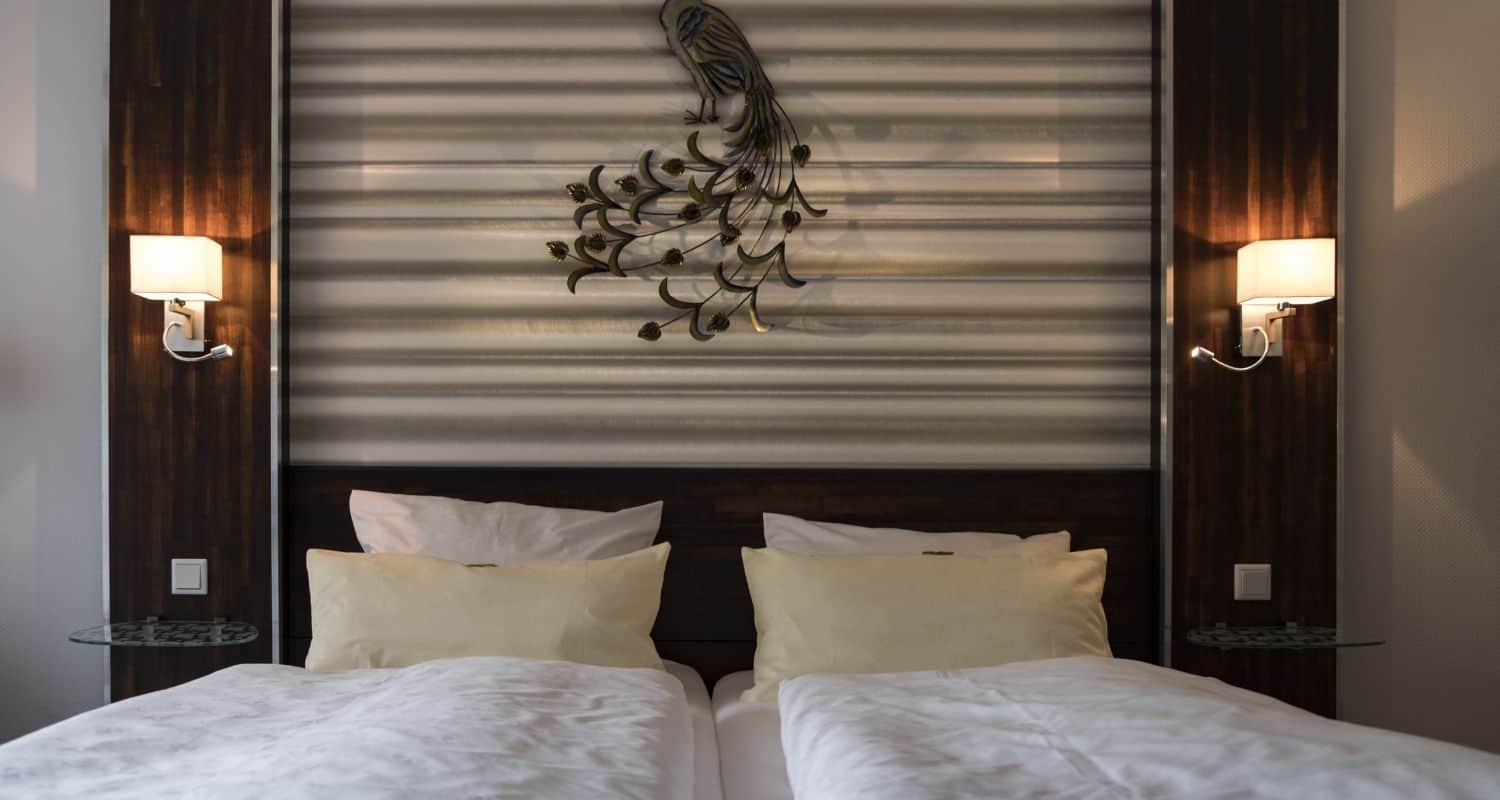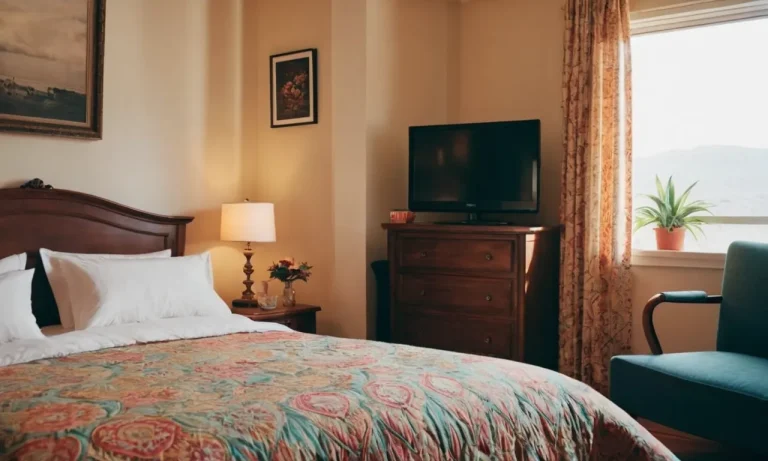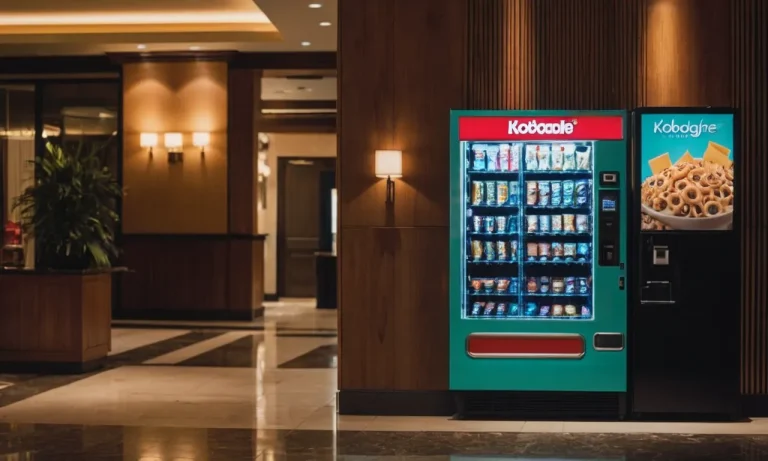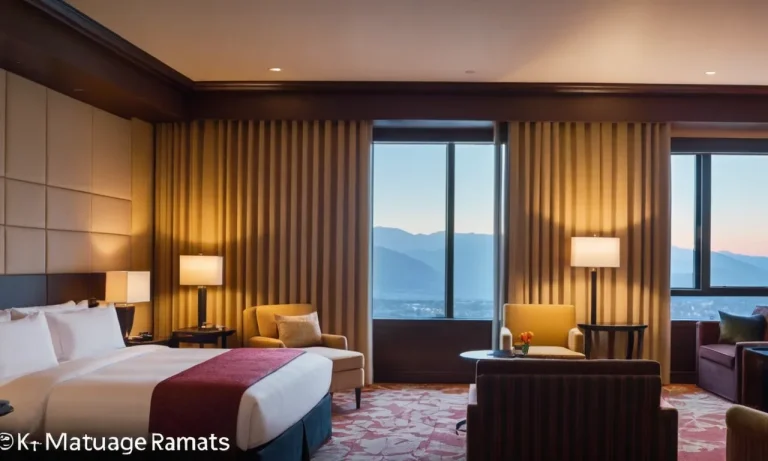Why Do Hotel Rooms Have Two Queen Beds?
Have you ever wondered why most hotel rooms come equipped with two queen-sized beds, even when you’re traveling solo or as a couple? This seemingly peculiar arrangement has become a standard in the hospitality industry, and there are several compelling reasons behind this design choice.
If you’re short on time, here’s a quick answer to your question: Hotel rooms often feature two queen beds to accommodate a variety of guest needs, from families and groups to couples seeking extra space and comfort.
In this comprehensive article, we’ll delve into the rationale behind this ubiquitous hotel room layout, exploring factors such as guest preferences, marketing strategies, and practical considerations.
We’ll also examine the evolution of hotel room design and how it has adapted to changing travel trends and guest expectations.
Accommodating Diverse Guest Needs
One of the primary reasons why many hotel rooms feature two queen beds is to cater to the diverse needs of guests. From families and groups to couples seeking extra space, and even solo travelers or business guests, this room configuration offers unparalleled flexibility and comfort.
Families and Groups
For families or groups traveling together, having two queen beds in a hotel room provides ample sleeping arrangements. According to a survey by Statista, 48% of families in the US prefer staying in hotels when traveling.
With two queen beds, parents and children can easily share the room without feeling cramped or sacrificing privacy. This setup is particularly convenient for families with kids, allowing them to create a comfortable and cost-effective home away from home.
Couples Seeking Extra Space
While couples may not necessarily require two beds, the extra space afforded by a room with two queen beds can be a welcome luxury. It allows for more room to spread out, store luggage, and enjoy a sense of openness during their stay.
Couples on romantic getaways or celebrating special occasions can appreciate the added comfort and privacy offered by this room configuration. According to a study, couples tend to prioritize comfort and space when choosing hotel accommodations.
Solo Travelers and Business Guests
Surprisingly, even solo travelers and business guests can benefit from rooms with two queen beds. For those who value extra space to work or simply relax, having an additional bed can serve as a makeshift couch or lounging area.
Business travelers, in particular, often appreciate the extra room to spread out documents or conduct meetings in the comfort of their hotel room. According to Hotel News Resource, 😊 over 60% of business travelers prefer rooms with two beds for added convenience and comfort during their stays.
By offering rooms with two queen beds, hotels can effectively cater to a wide range of guests, ensuring their unique needs and preferences are met. This versatile room configuration not only provides ample sleeping space but also offers flexibility, comfort, and a sense of home away from home for travelers of all kinds.
Marketing and Revenue Strategies
Hotels often opt for two queen beds in their rooms as part of a strategic marketing and revenue approach. This configuration caters to various guest preferences, allowing hotels to maximize occupancy rates, appeal to a broader market, and unlock lucrative upselling opportunities.
Maximizing Occupancy Rates
By offering rooms with two queen beds, hotels can accommodate a wider range of guests, including families, groups of friends, or couples who prefer separate sleeping spaces. According to a study by Hotel-Online, rooms with two queen beds consistently outperform single king rooms in terms of occupancy rates, especially during peak travel seasons.
This flexibility translates into higher revenue and improved overall profitability for the hotel.
Appealing to a Broader Market
Catering to diverse guest preferences is crucial in the hospitality industry. Two queen beds allow hotels to attract various market segments, from families with children to business travelers who prioritize comfort and space. This versatility enhances the hotel’s appeal and widens its potential customer base.
According to a survey by Statista, 38% of Americans prefer rooms with two queen beds for leisure travel, making it the most popular room type.
Upselling Opportunities
The availability of two queen beds also presents lucrative upselling opportunities for hotels. Guests traveling with larger groups or families may be willing to upgrade to a suite or connecting rooms with additional beds, generating higher revenue for the hotel.
Furthermore, hotels can offer premium amenities, such as enhanced bedding, in-room entertainment systems, or upgraded bathroom facilities, to guests who book rooms with two queen beds, creating additional revenue streams.
While the decision to offer rooms with two queen beds is driven by marketing and revenue strategies, it also aligns with the hospitality industry’s commitment to providing exceptional guest experiences.
By catering to diverse preferences and offering flexible accommodation options, hotels can foster guest satisfaction and cultivate long-term customer loyalty. 😊
Practical Considerations
Room Size and Layout
When it comes to hotel room design, space optimization is a critical factor. Two queen beds are often chosen because they can comfortably accommodate up to four guests while making efficient use of the available floor space.
According to a study by the American Hotel & Lodging Association, the average size of a standard hotel room in the United States is around 325 square feet. By opting for two queen beds, hotels can maximize the room’s capacity without compromising on guest comfort or creating a cramped environment.
Cost-Effectiveness
From a financial perspective, having two queen beds in a room can be a cost-effective solution for hotels. Purchasing and maintaining larger beds, such as king-sized ones, can be more expensive. Additionally, outfitting a room with two queen beds allows hotels to cater to a broader range of guests, including families, groups of friends, or business travelers sharing a room.
This flexibility can lead to higher occupancy rates and increased revenue. According to Statista, the average hotel occupancy rate in the United States was around 61.8% in 2021, highlighting the importance of maximizing room utilization.
Standardization and Consistency
Offering two queen beds in hotel rooms also contributes to standardization and consistency across the industry. Many hotel chains and franchises have adopted this room configuration as a standard, ensuring a familiar and predictable experience for guests.
This consistency can be particularly appealing to frequent travelers who value knowing what to expect in terms of room layout and amenities. Furthermore, standardization simplifies operations for hotel staff, streamlining processes such as housekeeping, maintenance, and inventory management.
While some hotels may deviate from this norm and offer alternative room configurations, such as king-sized beds or suites with separate living areas, the prevalence of rooms with two queen beds remains a widely accepted and practical choice for many properties.
It strikes a balance between space utilization, cost-effectiveness, and guest satisfaction, making it a popular option in the hospitality industry.
The Evolution of Hotel Room Design
Historical Perspective
The concept of having two beds in a hotel room can be traced back to the early days of the hospitality industry. In the past, travelers often shared rooms to save on costs, and the presence of two beds catered to this need.
This setup was particularly common among business travelers and families on a budget. As the hotel industry evolved, the practice of having two beds in a room became a standard offering, even as the reasons behind it shifted.
Adapting to Changing Travel Trends
Over time, the demand for hotel rooms with two beds grew as leisure travel became more prevalent. Families and groups of friends often preferred the convenience and affordability of sharing a room with two beds.
Hotels recognized this trend and began designing rooms specifically to accommodate these types of travelers. According to a report by Hotel News Resource, in 2021, approximately 65% of hotel rooms in the United States featured two queen or double beds, reflecting the enduring popularity of this room configuration.
Furthermore, the rise of online travel booking platforms has made it easier for travelers to compare room options and choose the one that best suits their needs. As a result, hotels have had to adapt their room offerings to cater to diverse preferences, including the desire for rooms with multiple beds.
The flexibility of two-bed rooms has become a key selling point for many hotels, allowing them to accommodate a wider range of guests and maximize occupancy rates.
Emerging Trends and Innovations
While the two-bed room configuration remains a staple in the hotel industry, some emerging trends and innovations are shaping the future of hotel room design. For instance, the rise of the sharing economy and the popularity of services like Airbnb have influenced the way hotels approach room layouts.
Some hotels are experimenting with more versatile and modular designs that can adapt to different guest needs, such as convertible furniture or movable walls.
Additionally, the emphasis on sustainability and eco-friendliness has led to the development of innovative room designs that prioritize energy efficiency and minimize environmental impact. For example, some hotels are incorporating smart technology to optimize heating, cooling, and lighting systems based on occupancy levels.
According to a study by the American Hotel & Lodging Association, hotels that implement sustainable practices can save up to 20% on energy costs and reduce their carbon footprint by up to 30%.
Despite these emerging trends, the two-bed room configuration remains a tried-and-true option that continues to cater to the diverse needs of modern travelers. Whether it’s families, groups of friends, or budget-conscious travelers, the flexibility and affordability of two-bed rooms ensure their enduring popularity in the ever-evolving hotel industry 😊.
Guest Preferences and Feedback
Surveys and Guest Reviews
Hotels heavily rely on guest feedback and surveys to understand the preferences and needs of their customers. According to a survey by TripAdvisor, one of the world’s largest travel platforms, over 65% of travelers prefer rooms with two queen beds when traveling with family or friends.
This preference is particularly strong among groups of friends or families with children, as it allows for more personal space and privacy.
Guest reviews on various travel websites also provide valuable insights into room preferences. A quick glance at Booking.com or Expedia reveals that many guests appreciate the flexibility and convenience of having two queen beds in a room.
Positive reviews often mention the ability to comfortably accommodate families or groups of friends without feeling cramped or having to share a bed.
Cultural Differences
Cultural differences play a significant role in room preferences. In some cultures, it is more common for family members or friends to share beds, while in others, personal space is highly valued. For example, in Asian countries like Japan and China, it is more common for families to share rooms with multiple beds or futons.
On the other hand, in Western cultures, there is a stronger emphasis on individual privacy, leading to a preference for separate beds or rooms.
Hotels in destinations with a diverse range of guests often cater to these cultural preferences by offering a mix of room types. For instance, hotels in popular tourist destinations like Las Vegas or Orlando may offer more rooms with two queen beds to accommodate families and groups, while business hotels in metropolitan areas may have a higher proportion of rooms with a single king bed, catering to business travelers or couples.
Balancing Preferences and Practicality
While guest preferences are a crucial factor, hotels also need to consider practical considerations when determining room configurations. According to a study by the American Hotel & Lodging Association, rooms with two queen beds are more cost-effective and space-efficient compared to rooms with a single king bed and a separate sofa bed or rollaway bed.
This can be particularly important in urban areas where space is at a premium and real estate costs are high.
Moreover, rooms with two queen beds are generally easier to maintain and clean, reducing the workload for housekeeping staff. The beds are standardized and can be easily replaced or rotated, while sofa beds or rollaway beds may require more effort and specialized equipment for cleaning and maintenance.
- Hotels often aim to strike a balance between guest preferences, cost-effectiveness, and operational efficiency.
- By offering a mix of room types, including those with two queen beds, they can cater to a wider range of guests while optimizing their resources and maximizing occupancy rates.
Conclusion
The prevalence of two queen beds in hotel rooms is a result of a carefully considered strategy that aims to cater to a diverse range of guest needs, maximize occupancy rates, and provide a comfortable and practical accommodation experience.
From families and groups to couples seeking extra space, this room configuration offers flexibility and versatility.
As the hospitality industry continues to evolve, hotel room design will likely adapt to emerging trends and guest preferences. However, the two queen bed layout remains a tried-and-true solution that strikes a balance between practicality, cost-effectiveness, and guest satisfaction.
By understanding the rationale behind this design choice, travelers can better appreciate the thought and planning that goes into creating a comfortable and accommodating hotel experience.






